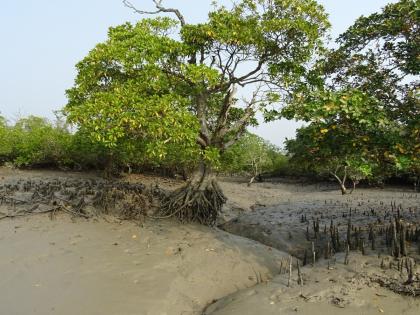IIT Bombay Study Highlights Mangroves as Natural Shields Against Tsunamis
By Amit Srivastava | Updated: February 24, 2025 11:17 IST2025-02-24T10:58:15+5:302025-02-24T11:17:46+5:30
Mumbai– Two decades after the devastating 2004 Indian Ocean tsunami, researchers at the Indian Institute of Technology Bombay (IIT ...

Mangroves Reduce Tsunami Destruction by 96%, Says IIT Bombay Research
Mumbai– Two decades after the devastating 2004 Indian Ocean tsunami, researchers at the Indian Institute of Technology Bombay (IIT Bombay) have reaffirmed the role of mangroves as natural coastal protectors. Their study explores how emergent vegetation acts as a bio-shield against tsunamis and cyclone-induced flooding, providing a sustainable alternative to traditional sea walls.
The research, led by Prof. Behera from the Department of Civil Engineering, used experimental and numerical methods to evaluate mangroves' ability to reduce tsunami-induced debris impact on buildings and bridges. Using Smoothed Particle Hydrodynamics (SPH) modeling, the team simulated how water, vegetation, and debris interact during extreme coastal events.
"Nature is supreme, and we must work with it, not against it. Coastal defense systems should align with natural processes like waves, currents, and sediment transport," said Prof. Behera, advocating for nature-based solutions.
Mangroves: A Proven Coastal Defense
The study focused on emergent vegetation, which includes plants rooted in the soil but with stems and leaves above water. Among these, mangroves proved to be the most effective, thanks to their sturdy roots and rigid stems, which help absorb wave energy and reduce impact. The research highlighted the Bhitarkanika mangroves in Odisha, which have consistently protected coastal regions from annual cyclones.
In contrast, floating and submerged vegetation were found to be ineffective, as they were either swept away or unable to dissipate wave energy.
Tsunami Impact Simulation
To test mangroves’ effectiveness, researchers created a scaled-down coastal model in a large water tank with a dam-break flume simulating tsunami waves. Sensors measured the debris impact force on structures, while accelerometers tracked movement speed.
The SPH simulation compared two vegetation types:
- Rigid Staggered Vegetation (RSV) – mimicking strong mangrove roots
- Tilting Staggered Vegetation (TSV) – representing plants that bend under waves
Results showed that rigid vegetation reduced debris impact by 96%, compared to 89% with tilted vegetation.
A Sustainable Coastal Protection Strategy
The study suggests planting rigid emergent vegetation as a cost-effective, eco-friendly solution to mitigate tsunamis and storm surges. Beyond disaster protection, mangroves also act as carbon sinks, supporting India's net-zero emissions goal.
Open in app